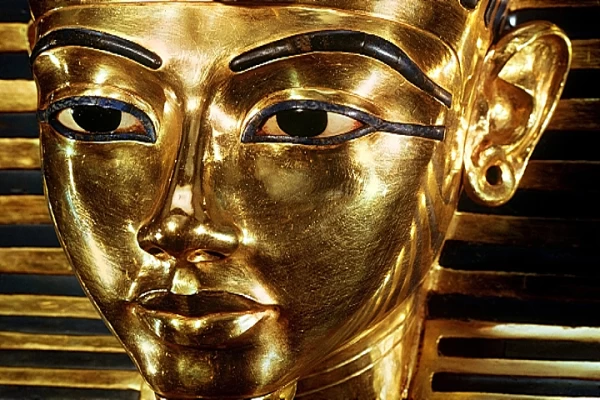
Pharaohs' Golden Parade
Pharaohs' Golden Parade
In a majestic and historic scene, the procession of royal mummies set off from the Egyptian Museum in Tahrir Square, in the center of the Egyptian capital Cairo, on Saturday evening, to the National Museum of Egyptian Civilization in Fustat, south of the capital, where the royal mummies will rest in their final resting place.
The royal procession of 22 mummies (18 kings and four queens) was greeted upon arrival at the Museum of Civilization by President Abdel Fattah al-Sisi, and the honor guard fired 21 shots in salute of Egypt's kings in front of the museum. King Sakhnen Ra will lead the procession of kings on their final journey to the Museum of Civilization in a reverential manner. After spending 100 years in the Egyptian Museum in Tahrir.
The procession moved through carts decorated with pharaonic drawings and inscriptions and equipped with a special atmosphere containing nitrogen so that the mummies are in suitable conditions for transportation, and each cart carries the name of the king inside it, amid tight security guards and the motorcycles of the Republican Guard.
The procession took about 40 minutes and covered seven kilometers, led by King Sakhnen Ra of the 17th Dynasty (16th century BC), with King Ramses IX of the 20th Dynasty (12th century BC) at the rear. It also included King Ramses II and Queen Hatshepsut. Thousands of Egyptians gathered to watch the historic event, and along the route of the procession, Pharaonic ceremonies began in Tahrir Square, where the carriages carrying the mummies of the kings set off amid a majestic festive atmosphere, extending to the Museum of Civilization, where a concert awaited the kings. Tahrir Square was decorated with a pharaonic obelisk brought from Luxor, and the surrounding buildings were decorated with lights.
President Sisi also inaugurated on Saturday evening the central hall of the National Museum of Egyptian Civilization, which received the procession of royal mummies, and includes nearly 1,600 artifacts of Egyptian civilization from prehistoric times through the Pharaonic, Greek, Roman, Coptic and Islamic eras to the modern and contemporary era.














